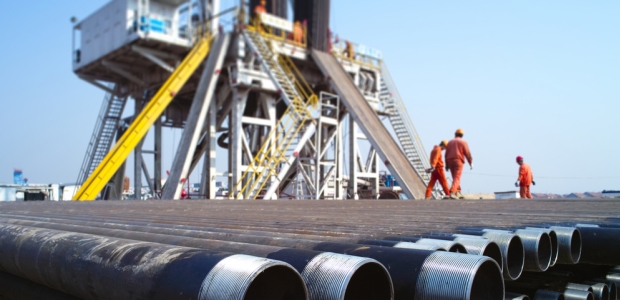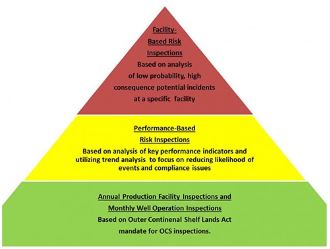
BSEE Launches Risk-Based Inspection Program
The first ones, taking place this month, will focus on crane operations of Gulf of Mexico operations. "We developed this program to address areas where trends in compliance and incident data suggest the potential for imminent safety concerns," said Jason Mathews, chief of BSEE's Gulf of Mexico Region Safety Management Office.
The federal Bureau of Safety and Environmental Enforcement is implementing a new Risk-Based Inspection Program, one that the agency says uses a systematic framework to identify facilities and operations that exhibit a high-risk profile. The risk-based inspections will supplement BSEE's existing National Safety Inspection Program.
The OCS Lands Act authorizes BSEE to conduct annual scheduled inspections and periodic unannounced inspections of all oil and gas operations. The new risk-based inspections will look beyond compliance and assess the integrity of critical safety systems on facilities and operations -- those that have had multiple incidents of non-compliance or events and may need more attention, according to its March 15 announcement.
 "We developed this program to address areas where trends in compliance and incident data suggest the potential for imminent safety concerns," said Jason Mathews, chief of BSEE's Gulf of Mexico Region Safety Management Office.
"We developed this program to address areas where trends in compliance and incident data suggest the potential for imminent safety concerns," said Jason Mathews, chief of BSEE's Gulf of Mexico Region Safety Management Office.
BSEE, created after the Deepwater Horizon disaster, uses inspection findings and incident reports to assign a risk factor score to each production facility in the Gulf of Mexico. The risk factor score is based on specific performance and risk-related information that falls into two types of risk-based inspections: "facility based" and "performance based." Based on its analysis of this information, BSEE prioritized the areas that require follow-up under the risk-based inspection protocols. The implementation of the new program demonstrates significant progress by BSEE during the past year, it says, adding that the Obama administration was criticized for a slow pace in implementing such a program from 2011-2016, and the Government Accountability Office in a 2012 report noted the need for an approach that would identify and evaluate offshore operations according to risk.
BSEE said its initial risk-based inspections this month will focus on crane operations.
"Our inspectors are the eyes and ears of what's really happening offshore at any given time,' said Mathews. "Without them, my team would never be able to do their analysis. Together, we strive for continuous improvement so that offshore energy operations are safe for workers and the environment. Director Angelle made it clear this was a priority to improve safety. We are excited about making the OCS a safe place."